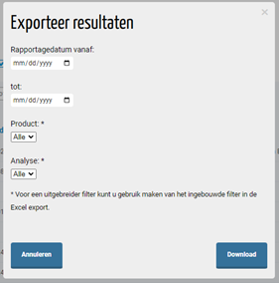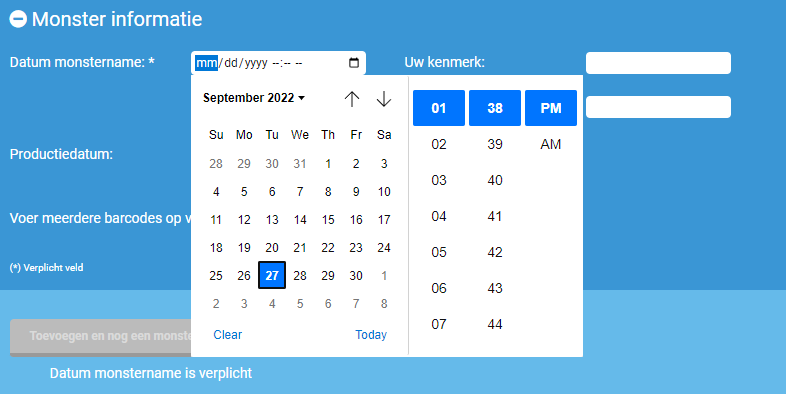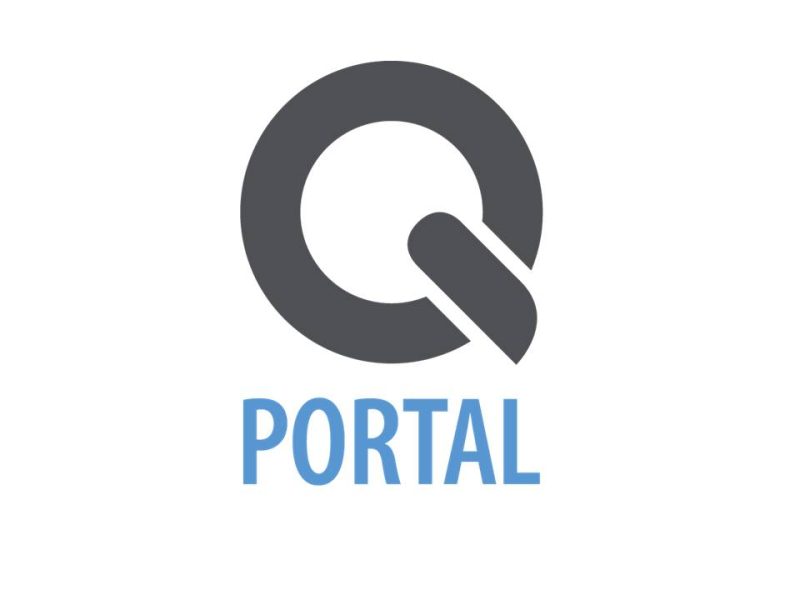We are continuously improving our customer portal Q-portal. Last 1 October, an update to Q-portal took place. This update resulted in the following three improvements:
Exporting results by product and analysis
It was already possible to export analysis results to Excel. But it is now also possible to make an export of a specific product and/or analysis. This makes it even easier for you as a customer to select and analyse your results.
Indication of time of sampling environmental samples
From 1 October, when entering sample information the time of sampling is also requested. Below you can read why the time of sampling is requested. This applies to liquid samples and environmental samples.


We regularly receive questions from customers about the indicative value of a research result for environmental samples. Why is the result reported as indicative? Is the result correct? We would like to explain this to you.
In our dairy laboratory, the procedures described in the various ISO standards are carefully followed. First of all, this concerns the general standard described specifically for laboratories: ISO 17025:2017. This contains all the requirements that testing laboratories must meet to demonstrate that they work according to a quality system, are technically competent and able to deliver correct results.
NEN-EN-ISO 18593:2018 further addresses environmental sampling using contact plates, cotton swabs, sponges and cloths on surfaces. Among other things, this standard specifies that examination in the laboratory should take place as soon as possible and at the latest within 24 hours. Surface samples received at Qlip’s laboratory before 3pm in the afternoon will be processed the same day.
Depending on the time of sampling of the surfaces and the time of delivery of the samples to the laboratory and the time of treatment of the samples, we are therefore forced, due to the ISO standards used, to report the result indicatively or not. However, the analysis did follow the procedures and the accuracy of the analyses is thus correct.
You can also help prevent indicative reporting by submitting the environmental samples to the laboratory for analysis as soon as possible after sampling. We advise you to record the date and time of sampling in Q-portal. For this purpose, the extra field “Time of sampling” has been added to Q-portal.
In Q-portal, you will find all information on the delivery of samples in the document ‘Sample delivery information‘.
If you use a B2B interface with our laboratory via XML, you will be contacted about this shortly.
Escherichia coli detection under accreditation
Regarding the detection of Escherichia coli, Qlip has switched to the internationally recognised NEN-ISO 7251 method (ANA-748). This method is suitable for milk, milk products and GOS and has now been favourably assessed by a team of the Council for Accreditation and added to Qlip’s Laboratory scope L099. Both the in-house method and the accredited method are currently offered via Q-portal. From 1 October 2022, we will only offer the accredited method. The rates will remain unchanged.
If you use an analysis package or template in Q-portal, we will adjust the old article codes to the new article codes for you before 1 October.
Below is an overview of the change in article codes:

